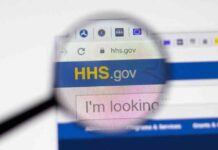Prescription drug sales in the United States through a government discount program called the 340B Drug Discount Program reached a whopping $63 billion in 2023. This is a significant 23.4% increase from the previous year, as reported by the Health Resources & Services Administration, the agency responsible for managing the program.
The 340B program mandates drug manufacturers to provide discounts, which are usually between 25% to 50% off, on all outpatient drugs to hospitals and clinics catering to low-income patients. The number of entities participating in the program has exceeded 12,000 and continues to grow steadily over the years.
Since its inception over 30 years ago, the 340B program has experienced exponential growth, leading to debates over the high cost of prescription medications. In 2020, $38 billion worth of prescription drugs were purchased through the program, a significant increase from $16.2 billion in 2016. This rapid growth has sparked tensions between the pharmaceutical and hospital sectors.
The surge in sales under the 340B program reflects the growing need for affordable medications among underserved communities. The discounts offered through this program play a crucial role in ensuring access to essential drugs for those who may not be able to afford them otherwise.
However, the escalating sales figures have also raised concerns about the sustainability and transparency of the program. Critics argue that the program may be susceptible to abuse and that stricter regulations are needed to prevent misuse of the discounts.
Despite the controversies surrounding the 340B program, its impact on providing cost-effective medications to vulnerable populations cannot be overlooked. As the program continues to expand, discussions on how to balance the interests of drug manufacturers, healthcare providers, and patients will become increasingly important.
In conclusion, the $63 billion in prescription drug sales through the 340B Drug Discount Program highlights the ongoing debate over drug pricing and access to healthcare. While the program has undeniably helped increase affordability for many patients, there is a need for ongoing evaluation and oversight to ensure its long-term effectiveness and fairness for all stakeholders involved.

















